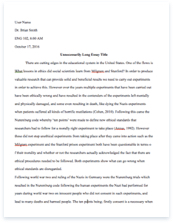Alice Walker “In Search of Our Mother’s Gardens”

A limited time offer! Get a custom sample essay written according to your requirements urgent 3h delivery guaranteed
Order NowIf we apply the principle of creative suffering to Walker’s paraphrase, may the sadness caused by the loss of the young women actually heighten potential? In what sense does art exist because of slavery and patriarchy, not just in spite of them as Walker would have us believe? Clearly, the positive outcomes of suffering do not make the infliction of suffering acceptable. The quilt that hangs in the Smithsonian is not a justification for the oppression that led to its creation. “In fanciful, inspired, and yet simple and identifiable figures, it portrays the story of the Crucifixion. It is considered rare, beyond price. Though it follows no known pattern of quilt making, and though it is made of bits and pieces of worthless rags, it is obviously the work of a person of powerful imagination and deep spiritual feeling”. (Walker 2434)
The sadness caused by the loss of the young women may actually heighten potential. It is not only that hardship may present artistic expression but that hardship may also displace a woman’s spirituality onto humble pursuits. Slavery and patriarchy, though fatal to some, did not eliminate women’s artistic ability but it did re-channel it into quilting, hymn singing and gardening. There is no disputing that under better circumstances, women could have created art on a far grander scale, but their humble achievements are art nonetheless.
Black American women are now in position to relate to each other as women and as artists, with the image of, “Virginia Woolf, in her book A Room of One’s Own, wrote that in order for a woman to write fiction she must have two things, certainly: a room of her own (with lock and key) and enough money to support herself.” (Walker 2432) There is a portrayal that female space either confines women and stifles their creativity or enables them to express their artistic impulses. Walker’s mother’s flower garden is this type of space as well, and is similar to the image of the closed gates in Walkers Paraphrase of Okot p’Bitek’s poem.
“O, my clanswomen
Let us all cry together!
Come,
Let us mourn the death of our mother,
The death of a Queen
The ash that was produced
By a great fire!
O, this homestead is utterly dead
Close the gates
With lacari thorns,
For our mother
The creator of the Stool is lost!
And all the young women
Have perished in the wilderness!” (Walker 2431)
However, ‘ash’ is to be read, the outcome of the ‘great fire’ is not as negative as an initial reading suggests. The young women may have perished in the wilderness, but the clanswomen in line one have survived to combine their voices and presumably to generate replacements for the young women who were lost.
The paraphrase of Okot p’Bitek’s poem must finally be read along side Walker’s statement about an African mother “over two hundred years ago” who sang and wove mats and told “ingenious stories.” “Perhaps,” writes Walker, “she was herself a poet–through only her daughter’s name is signed to the poems that we know” (2436). Again, this relationship calls to mind Walker and her own mother, whose stories provide a basis for some of Walker’s fiction. “Yet so many of the stories that I write, that we all write, are my mother’s stories. Only recently did I fully realize this: That through years of listening to my mother’s stories of her life, I have absorbed not only the stories themselves, but something of the manner in which she spoke, something of the urgency that involves the knowledge that her stories–like her life–must be recorded.” (2435)
Walker regards the education of women as the essential element. Rather than merely regretting that black American women have not been able to “paint watercolors of sunsets, or the rain falling on the green and peaceful pasturelands” (2431) Walker emphasizes their achievements despite poverty, the burden of children and struggle.










